Governors of British Ceylon
The governor of Ceylon was the representative in Ceylon of the British Crown from 1795 to 1948. In this capacity, the governor was president of the Executive Council and Commander-in-Chief of the British Forces in Ceylon. The governor was the head of the British colonial administration in Ceylon, reporting to the Colonial Office.
| Governor of Ceylon | |
|---|---|
.svg.png.webp) Flag of Governor of Ceylon | |
| Style | His Excellency |
| Residence | Government House |
| Appointer | Monarch of the United Kingdom |
| Precursor | Governor of Ceylon |
| Formation | August 1795 |
| First holder | Patrick Alexander Agnew as Military Governor |
| Final holder | Henry Monck-Mason Moore |
| Abolished | 4 February 1948 |
| Succession | Governor-General of Ceylon |
With Ceylon gaining self-rule and dominion status with the creation of Dominion of Ceylon in 1948, this office was replaced by the Governor-General, who represented the British monarch as the head of state. The office of Governor-General was itself abolished in 1972 and replaced by the post of President when Sri Lanka became a republic.
Appointment
The governor, appointed by the British monarch (on the advice of the prime minister and the secretary of state for the colonies), maintained executive power in Ceylon throughout British rule.
Powers and functions
The governor was the head of the executive administration in the island. Initially limited to the coastal regions, the authority of the governor was extended to the provinces of the Kingdom of Kandy following the Kandyan Convention in 1815. The governor had absolute power in the island deriving it from the traditional powers of the Dutch governors and the king of Kandy and reporting to the secretary of state for the colonies. it was in the Colebrooke Reforms which first defined the role of the governor as "the representative of the Sovereign the Monarch who rules over the Parliament of the United Kingdom". These reforms introduced the first legislator which was expanded over the next century in the reforms that took place. Upon independence in 1948, the office of the Governor was abolished and replaced with that of the Governor-General as the representative of the sovereign.[1]
The governor was the commander-in-chief of British Forces in Ceylon, except only during World War II, when Admiral Sir Geoffrey Layton was appointed Commander-in-Chief, Ceylon with power exceeding that of the governor.
Ceremonial
In November each year, the governor would receive the annual tribute from the sultan of Maldives. The governor was the ex-officio Chancellor of the University of Ceylon and patron of the Royal College Colombo.
Council
Following the Colebrooke Reforms the Executive Council of Ceylon and the Legislative Council of Ceylon was established with the Governor chairing both these councils. In 1931, the Legislative Council was replaced by the State Council of Ceylon with limited self-government.
Style and title
The title of the position was "Governor of Ceylon" and was styled Excellency and enjoyed precedence over all other government officials in Ceylon. He was referred to as 'His Excellency' and addressed as 'Your Excellency'. This practice as constituted to the office of President.
Privileges
Residence
The governor's main residence and office was the King's House in Colombo and secondary residence was the King's Pavilion in Kandy. The vacationing residence of the governor, Queen's Cottage, was located in the hill station of Nuwara Eliya.
Guard
The Governor's Bodyguard was a mounted guard that functioned as a ceremonial guard for the governor when attending state functions. An ceremonial native regiment of Lascoreens was maintained by the office of the governor to provide a ceremonial guard on special occasions such as the Maldivian Tribute or royal visits.
Staff
The governor's office was housed at King's House and had a permanent staff. It consisted of the secretary to the governor, a private secretary, an aide-de-camp, the maha mudaliyar, an office assistant and support staff.
List of governors
| No. | Portrait | Name (Birth–Death) |
Term of office | Sovereign | Ref. | ||
|---|---|---|---|---|---|---|---|
| Took office | Left office | Time in office | |||||
| Military Governors (1795–1798) | |||||||
| 1 | Patrick Alexander Agnew (1765–1813) (in Trincomalee) |
August 1795 | 1 March 1796 | 7 months | George III | ||
| 2 |  |
James Stuart (1741–1815) |
1 March 1796 | 1 January 1797 | 306 days | George III | |
| 3 | Welbore Ellis Doyle (1758–1797) |
1 January 1797 | 2 July 1797 | 182 days | George III | ||
| 4 | Peter Bonnevaux (c. 1752–1797) |
2 July 1797 | 12 July 1797 † | 10 days | George III | ||
| 5 | Pierre Frédéric de Meuron (1788–1813) |
12 July 1797 | 12 October 1798 | 1 year, 92 days | George III | ||
| Resident and Superintendent (1796–1798) | |||||||
| 1 | Robert Andrews (1763–1821) |
12 February 1796 | 12 October 1798 | 2 years, 242 days | George III | ||
| Governors (1798–1948) | |||||||
| 1 |  |
Frederick North (1766–1827) |
12 October 1798 | 19 July 1805 | 6 years, 280 days | George III | |
| 2 | 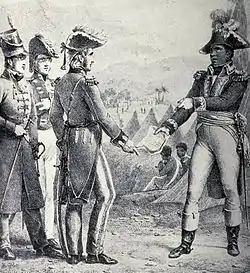 |
Thomas Maitland (1760–1824) |
19 July 1805 | 19 March 1811 | 5 years, 243 days | George III | |
| John Wilson (1780–1856) Acting |
19 March 1811 | 11 March 1812 | 358 days | George III | |||
| 3 | 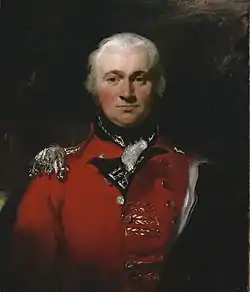 |
Robert Brownrigg (1759–1833) |
11 March 1812 | 1 February 1820 | 7 years, 327 days | George III | |
 |
Edward Barnes (1776–1838) Acting |
1 February 1820 | 2 February 1822 | 2 years, 1 day | George III George IV |
||
| 4 | 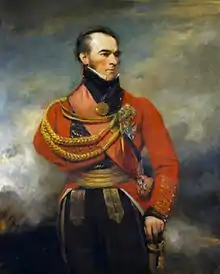 |
Edward Paget (1775–1849) |
2 February 1822 | 6 November 1822 | 277 days | George IV | |
| James Campbell (c. 1773–1835) Acting |
6 November 1822 | 18 January 1824 | 1 year, 73 days | George IV | |||
| 5 |  |
Edward Barnes (1776–1838) |
18 January 1824 | 13 October 1831 | 7 years, 268 days | George IV William IV |
|
| John Wilson (1780–1856) Acting |
13 October 1831 | 23 October 1831 | 10 days | William IV | |||
| 6 |  |
Robert Wilmot-Horton (1784–1841) |
23 October 1831 | 7 November 1837 | 6 years, 15 days | William IV Queen Victoria |
|
| 7 | 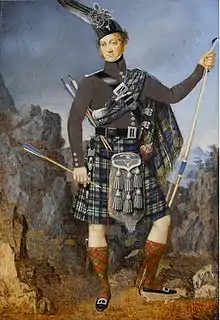 |
James Alexander Stewart-Mackenzie (1784–1843) |
7 November 1837 | 15 April 1841 | 3 years, 159 days | Queen Victoria | |
| 8 | 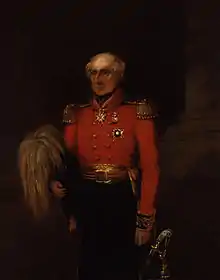 |
Colin Campbell (1776–1847) |
15 April 1841 | 19 April 1847 | 6 years, 4 days | Queen Victoria | |
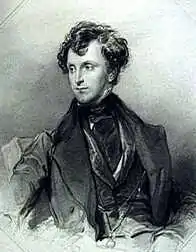 |
James Emerson Tennent (1804–1869) Acting |
19 April 1847 | 29 May 1847 | 40 days | Queen Victoria | ||
| 9 | 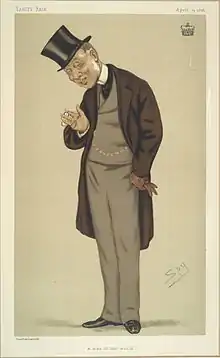 |
The Viscount Torrington (1812–1884) |
29 May 1847 | 18 October 1850 | 3 years, 142 days | Queen Victoria | |
| Charles Justin MacCarthy (1811–1864) Acting |
18 October 1850 | 27 November 1850 | 40 days | Queen Victoria | |||
| 10 | George William Anderson (1791–1857) |
27 November 1850 | 18 January 1855 | 4 years, 52 days | Queen Victoria | ||
| Charles Justin MacCarthy (1811–1864) Acting |
18 January 1855 | 11 May 1855 | 113 days | Queen Victoria | |||
| 11 | 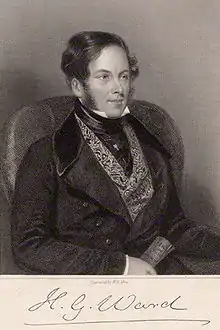 |
Henry George Ward (1797–1860) |
11 May 1855 | 30 June 1860 | 5 years, 50 days | Queen Victoria | |
| Henry Frederick Lockyer (1797–1860) Acting |
30 June 1860 | 30 July 1860 | 30 days | Queen Victoria | |||
| Charles Edmund Wilkinson (1807–1870) Acting |
30 July 1860 | 22 October 1860 | 84 days | Queen Victoria | |||
| 12 | Charles Justin MacCarthy (1811–1864) |
22 October 1860 | 1 December 1863 | 3 years, 40 days | Queen Victoria | ||
.jpg.webp) |
Terence O'Brien (1830–1903) Acting |
1 December 1863 | 21 March 1865 | 1 year, 110 days | Queen Victoria | ||
 |
Hercules Robinson (1824–1897) Acting |
21 March 1865 | 16 May 1865 | 56 days | Queen Victoria | ||
| 13 |  |
Hercules Robinson (1824–1897) |
16 May 1865 | 4 January 1872 | 6 years, 233 days | Queen Victoria | |
| Henry Turner Irving (1833–1923) Acting |
4 January 1872 | 4 March 1872 | 60 days | Queen Victoria | |||
| 14 |  |
William Henry Gregory (1817–1892) |
4 March 1872 | 4 September 1877 | 5 years, 184 days | Queen Victoria | |
| 15 | 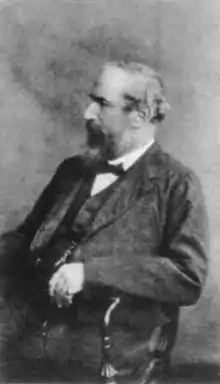 |
James Robert Longden (1827–1891) |
4 September 1877 | 10 July 1883 | 5 years, 309 days | Queen Victoria | |
| John Douglas (1835–1885) Acting |
10 July 1883 | 3 December 1883 | 146 days | Queen Victoria | |||
| 16 |  |
Arthur Hamilton-Gordon (1829–1912) |
3 December 1883 | 28 May 1890 | 6 years, 176 days | Queen Victoria | |
| 17 |  |
Arthur Elibank Havelock (1844–1908) |
28 May 1890 | 24 October 1895 | 5 years, 149 days | Queen Victoria | |
| Edward Noël Walker (1842–1908) Acting |
24 October 1895 | 10 February 1896 | 109 days | Queen Victoria | |||
| 18 |  |
Joseph West Ridgeway (1844–1930) |
10 February 1896 | 19 November 1903 | 7 years, 282 days | Queen Victoria Edward VII |
|
| Sir Everard im Thurn (1852–1932) Acting |
19 November 1903 | 3 December 1903 | 14 days | Edward VII | |||
| 19 |  |
Henry Arthur Blake (1840–1918) |
3 December 1903 | 11 July 1907 | 3 years, 220 days | Edward VII | |
.jpg.webp) |
Hugh Clifford (1866–1941) Acting |
11 July 1907 | 24 August 1907 | 44 days | Edward VII | ||
| 20 | .jpg.webp) |
Henry Edward McCallum (1852–1919) |
24 August 1907 | 24 January 1913 | 5 years, 153 days | Edward VII George V |
|
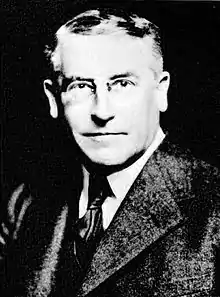 |
Reginald Edward Stubbs (1876–1947) Acting |
24 January 1913 | 18 October 1913 | 267 days | George V | ||
| 21 | 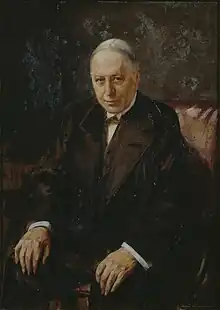 |
Robert Chalmers (1858–1938) |
18 October 1913 | 4 December 1915 | 2 years, 47 days | George V | |
 |
Reginald Edward Stubbs (1876–1947) Acting |
4 December 1915 | 15 April 1916 | 133 days | George V | ||
| 22 | 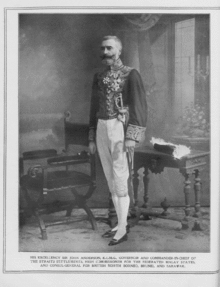 |
John Anderson (1858–1918) |
15 April 1916 | 24 March 1918 † | 1 year, 343 days | George V | |
 |
Reginald Edward Stubbs (1876–1947) Acting |
24 March 1918 | 10 September 1918 | 170 days | George V | ||
| 23 |  |
William Henry Manning (1863–1932) |
10 September 1918 | 1 April 1925 | 6 years, 203 days | George V | |
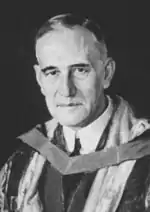 |
Cecil Clementi (1875–1947) Acting |
1 April 1925 | 18 October 1925 | 200 days | George V | ||
| Edward Bruce Alexander (1872–1955) Acting |
18 October 1925 | 30 November 1925 | 43 days | George V | |||
| 24 | .jpg.webp) |
Hugh Clifford (1866–1941) |
30 November 1925 | June 1927 | 1 year, 6 months | George V | |
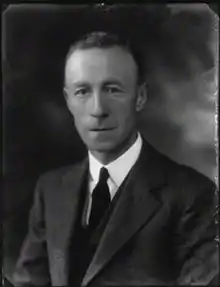 |
Arthur George Murchison Fletcher (1878–1954) Acting |
June 1927 | 20 August 1928 | 1 year, 2 months | George V | ||
| 25 | 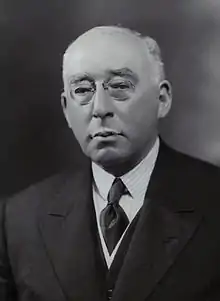 |
Herbert Stanley (1872–1955) |
20 August 1928 | 11 February 1931 | 2 years, 175 days | George V | |
| Bernard Henry Bourdillon (1883–1948) Acting |
11 February 1931 | 11 April 1931 | 59 days | George V | |||
| 26 | Graeme Thomson (1875–1933) |
11 April 1931 | 20 September 1933 | 2 years, 162 days | George V | ||
| Graeme Tyrrell (1876–1964) Acting |
20 September 1933 | 23 December 1933 | 94 days | George V | |||
| 27 |  |
Reginald Edward Stubbs (1876–1947) |
23 December 1933 | 30 June 1937 | 3 years, 189 days | George V Edward VIII George VI |
|
| Maxwell MacLagan Wedderburn (1883–1953) Acting |
30 June 1937 | 16 October 1937 | 108 days | George VI | |||
| 28 | 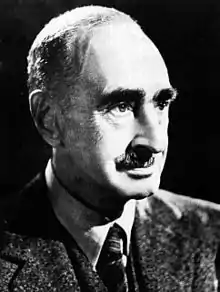 |
Andrew Caldecott (1884–1951) |
16 October 1937 | 19 September 1944 | 6 years, 339 days | George VI | |
| 29 | Henry Monck-Mason Moore (1887–1964) |
19 September 1944 | 4 February 1948 | 3 years, 138 days | George VI | ||
References
- Specific
_(2022).svg.png.webp)